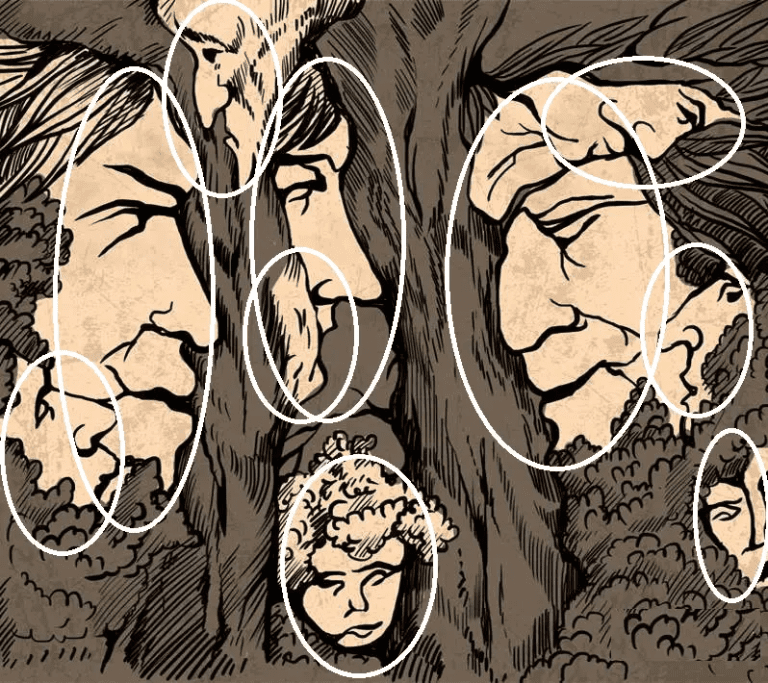
Why do these illusions fascinate us? Our brains try to make sense of shapes based on familiar patterns. Sometimes we see faces where none exist, thanks to pareidolia, the brain’s instinct to recognize familiar objects. Evolutionarily, spotting faces quickly helped humans survive, which is why we notice them in tree branches more than random shapes.
Some faces in the tree are easy to find, others are subtle. That’s the fun part: illusions push us to slow down, focus, and notice details we usually miss. It’s a mix of seeing raw data with our eyes and interpreting it through memory and expectations—our brains creating patterns from chaos. Here is the ANSWER :

Solving an optical illusion is satisfying. It gives a little mental “win” while sparking curiosity and friendly competition online. But beyond entertainment, illusions remind us to question assumptions, think critically, and see the world from new angles.
So, how many faces did you find? Whether you spotted them all or just a few, the real joy is in the challenge. Optical illusions celebrate curiosity, observation, and the hidden surprises waiting in plain sight.